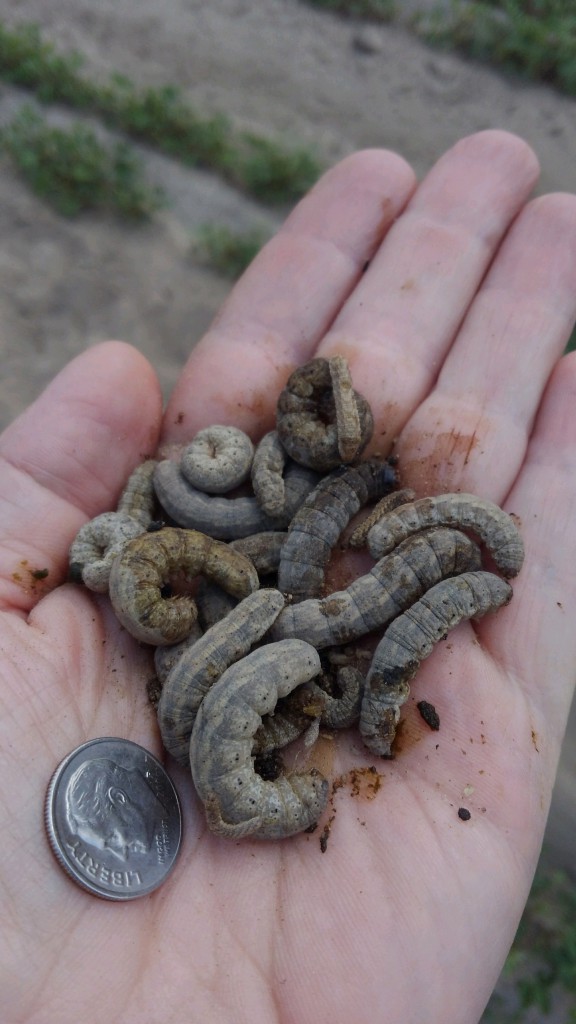Here is an interesting article written by UGA’s Peanut Entomologist Dr. Mark Abney:
It is always something…this week in the world of peanut entomology that something is cutworms. We see cutworm injury to peanut foliage every year in the month of June, and in most cases these infestations are nothing more than curiosities. This year scouts, agents, and growers are finding and reporting much higher than usual populations and levels of defoliation that are getting our attention in some fields. Cutworms rarely warrant treatment in peanut, but when populations are high they can cause significant injury. Cutworms can be found on foliage in the daytime, but it is more common for them to feed at night and retreat to the soil once the sun comes up. Scratching around in the top inch of soil at the base of plants is the best way to find cutworm larvae in peanuts during the day.
When should we treat a cutworm infestation with an insecticide and what product(s) should we use? The question of whether or not to treat should be based on the size and condition of the plants, the level of injury observed, and the size and number of cutworms in the field. Peanut can tolerate a lot of defoliation with no loss in yield as long as growing conditions are favorable. Nevertheless, heavy, prolonged defoliation with limited ability for regrowth will ultimately reduce yield. Often, cutworm infestations will go unnoticed until the larvae are very large (over an inch long). These large caterpillars will be difficult to kill, and are likely to cycle out (pupate) within a few days. If the caterpillars are small or if the population is a mix of small and large larvae then injury is likely to continue for some time. The larval stage can last from 18 to 35 days, but in the heat of the Georgia summer we can expect development to be on the shorter end of the spectrum. Spraying 18 day old caterpillars might make us feel better, but it probably will not save us any money.
There is not much information available about insecticide efficacy against cutworm in peanut. Pyrethroids are commonly recommended for cutworm management, and I expect that pyrethroids will provide acceptable control if they are applied correctly. Many folks, including me, are reluctant to put a pyrethroid in a non-irrigated peanut field especially in a year when spider mites have already been seen in the crop. The price of control increases dramatically when we look at options other than pyrethroids, and this creates a dilemma for growers. In the end, we will have to weigh the risk of mites against the risk of loss from cutworms and the cost of alternate chemistry. Spraying late in the day and making sure the foliage is well covered should improve the odds of success if an insecticide application is required.
From 2013 through 2018 I probably received a total of one cutworm call; I received six cutworm calls this week. Now would be a good time to take a walk through the peanut field to make sure cutworms and other insect pests are not damaging the crop.
The photo below shows cutworm larvae of mixed ages found in a peanut field on 27 June. The photo was taken by Laurens County ANR Agent Raymond Joyce.

